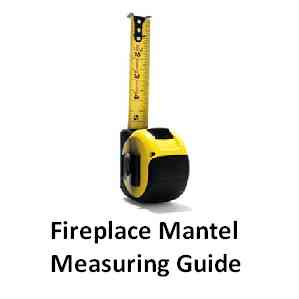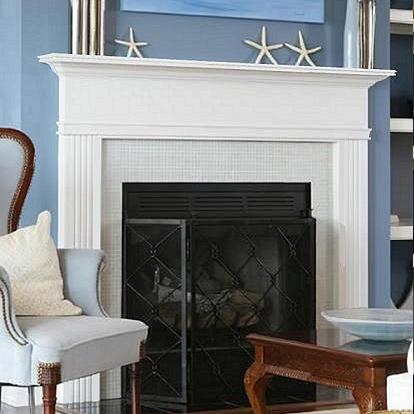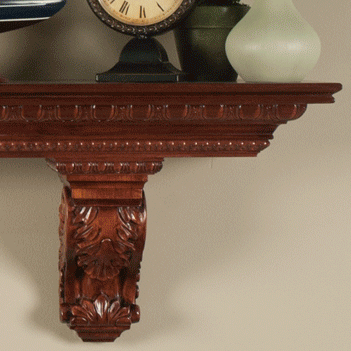Our Products:
Our Products:
Brands
Brands
- Home
- FAQ
- Wood, Stone & Marble Fireplace Mantels & Mantel Shelf FAQ's
- Building Code & Clearance Information - Fireplaces Designed to Burn Wood
Building Code & Clearance Information - Fireplaces Designed to Burn Wood
Warning: Risk of fire and/or smoke damage may occur as a result of fireplaces and mantels installed without adequate fire-hazard clearances and may lead to asphyxiation, injury and/or death.
What are the fire hazard safety clearance requirements for wood burning fireplace surrounds?
Fireplace mantels by Design the Space constructed from wood - sometimes referred to as wooden fireplace mantel surrounds - are combustible and fire hazard clearances need to be maintained since safety is the primary concern. As the owner and/or contractor overseeing the installation, it is your responsibility to check with local building code officials (e.g., city hall and/or the local building permit department) to ensure your wood mantel installation meets any local building codes or ordinances. Codes vary all across the country and local codes take precedence over any national code. In the absence of local codes, we suggest your installation clearances meet or exceed the National/Standard Building Codes or the National Fire Code.
National Standard Building Code Information
2114.3 Masonry-built Fireplaces 4114.3.10 - All combustible mantels and similar trim shall be kept at least 6 inches from the fireplace opening. Parts of the mantel assembly located along the sides of the fireplace opening which project more than 1 1/2 inches (38mm) from the face of the fireplace shall have additional clearance equal to the projection extension beyond 1 1/2 inches. Parts of the mantel assembly located above and projecting more than 1 1/2 inches (38mm) from the fireplace opening shall not be placed less than 12 inches (305mm) from the top of the fireplace opening.
2806 Fireplaces Factory Built 2806.1.2 - Factory-built fireplaces shall be testing-agency listed and shall be installed in accordance with the conditions of the listing. (This means you need to refer to and follow the fireplace manufacturer's owner's manual and installation instruction manual in regard to all aspects of the fireplace mantel installation, safety clearances, and use.)
National Fire Code
The National Fire Code exists to protect homeowners. The primary goal is to help you avoid creating unsafe situations that can result in a fire burning your home and possibly causing the loss of life. The National Fire Code dictates that any combustible material (e.g., wood mantel or similar trim) must be at least six inches from the firebox opening. An additional inch of clearance is needed for every 1/8 inch the combustible material or trim protrudes.
Zero-Clearance Manufactured Fireplace Information:
You should always refer to and observe any and all warnings in the owner’s manual/installation guide for your fireplace. Contact the manufacturer of the fireplace if you don't have an owner's manual. Generally speaking, the term zero-clearance means that ‘inside’ the wall into which the fireplace is recessed, you can bring wood or framing right up to the insulated fire-box, or up to stand-offs that are built-in. Some zero-clearance fireplace products have labels and/or instructions listing 1/2" or more clearance to certain parts. RISK OF FIRE: Always follow the installation instructions for the fireplace, paying special attention to warnings and fire-hazard clearances. If there is any doubt, you should contact the manufacturer of the fireplace itself. An improper installation of the unit, mantel, surround, or hearth can lead to a fire-hazard which can cause personal or property damage and/or loss of life.
On most fireplaces (either electric, wood or gas-fired), heat comes out of the front of the fireplace (along its sides and top) and many also radiate heat to the sides, up above the fireplace, and down toward the floor. For these reasons, among others, most fireplaces will need to have some non-combustible materials surrounding the front of a fireplace (between the fireplace and any combustible mantel) and in the case of all wood burning fireplaces, also on the floor in front of the fireplace extending to each side, as well. Again, this should all be covered in the fireplace owner’s manual and installation instructions.
 Loading... Please wait...
Loading... Please wait... 


